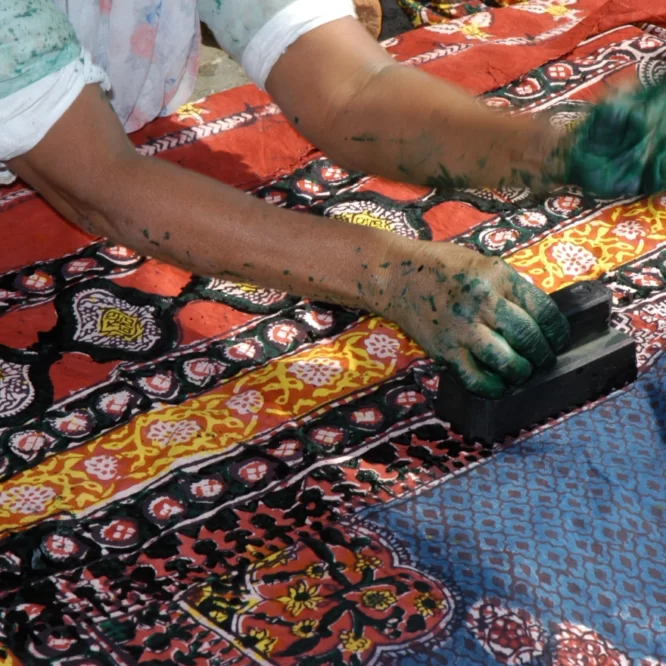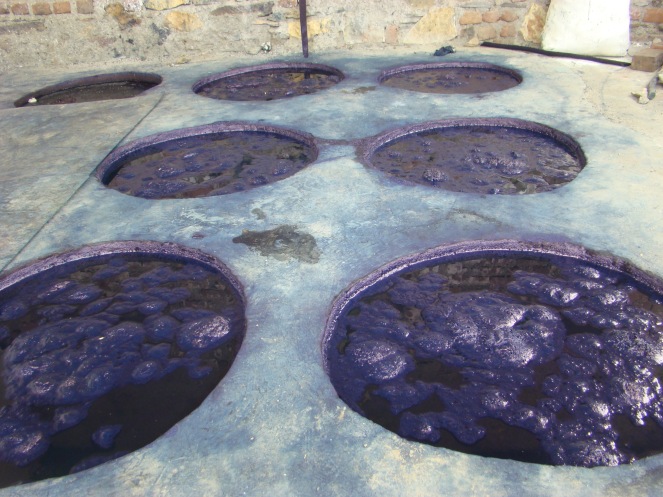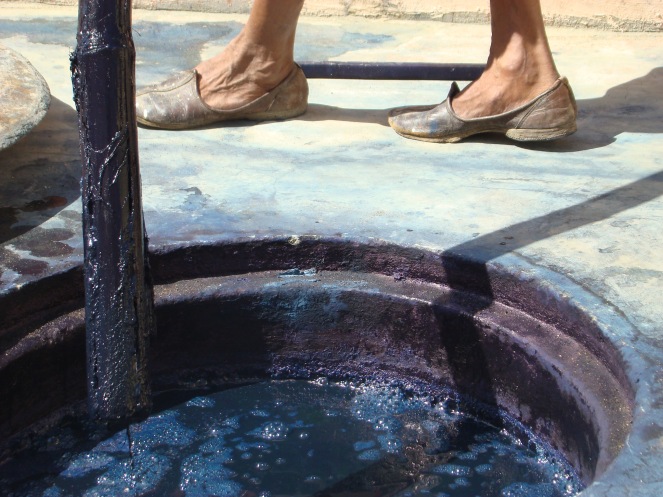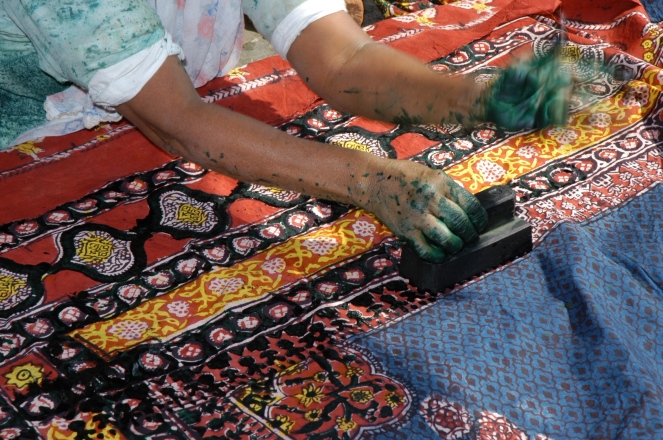Indigo was an important commercial crop in India, and was a very important issue during the struggle for freedom, shiploads of indigo were sent to the west as the profits were very high. But once indigo was synthesized this market collapsed.
The indigo printed cloth made in western and southern India was exported to Egypt, Europe, and many Arabic countries for centuries. Till today Ajrakh in Gujarat; Dhabu in Rajasthan and kalamkaari in Southern India are practiced by master craftsmen using resist printing techniques in Neel-Indigo.
In Jaipur there still exists a Neelgaron ka mohalla- literally meaning, a quarter of the Neelgars –the indigo dyers. As among the dyers it was a special caste the Neelgar that would dye only with indigo. There are quite a few practicing artisans in Rajasthan who work with indigo printing, but the synthetic version of the same, the basic patterns and techniques remain the same, but the dyes are not natural any more.
South East Asia was another important center

 for exports, where Saudagiri printed fabrics were exported, Saudagar means –business man; and Saudagiri for the business men .These were made using very small blocks on a blue base, we can still see pictures of women in temples in Thailand, wearing these kinds of sarongs. There are quite a few printers in Ahmedabad, who still have those blocks and the techniques, but due to huge labor costs and time involved, they do not print Saudagiri prints any more.
for exports, where Saudagiri printed fabrics were exported, Saudagar means –business man; and Saudagiri for the business men .These were made using very small blocks on a blue base, we can still see pictures of women in temples in Thailand, wearing these kinds of sarongs. There are quite a few printers in Ahmedabad, who still have those blocks and the techniques, but due to huge labor costs and time involved, they do not print Saudagiri prints any more.
Plain dyed indigo fabrics are sent till today to Africa, to be worn by the farmers to protect them from snake bites. The amazing Satara the big Chador –a shawl which is like a big bed sheet draped by Yemeni women to cover their silhouette entirely is still made in Ahmedabad by traditional families ,the piece passes through 65 hands before it is complete.
Ajrakh came to India from Arabic origins via Sindh and Rajasthan; today it has become one of the most popular names in natural dyed fabrics. Older examples of the technique exist in V&A, London. Originally a multipurpose shawl for men, worn as a turban, shawl or wrap for the lower part of the body .Today has become an object of collection all over the world.
Thus the magic of blue continues all over the world, and the Indian association remains strong.




 for exports, where Saudagiri printed fabrics were exported, Saudagar means –business man; and Saudagiri for the business men .These were made using very small blocks on a blue base, we can still see pictures of women in temples in Thailand, wearing these kinds of sarongs. There are quite a few printers in Ahmedabad, who still have those blocks and the techniques, but due to huge labor costs and time involved, they do not print Saudagiri prints any more.
for exports, where Saudagiri printed fabrics were exported, Saudagar means –business man; and Saudagiri for the business men .These were made using very small blocks on a blue base, we can still see pictures of women in temples in Thailand, wearing these kinds of sarongs. There are quite a few printers in Ahmedabad, who still have those blocks and the techniques, but due to huge labor costs and time involved, they do not print Saudagiri prints any more.